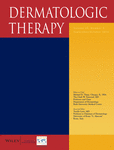Topical liposomal azithromycin in the treatment of acute cutaneous leishmaniasis
Conflict of interest: There were no conflicts of interest to be stated.
Abstract
Cutaneous leishmaniasis (CL) treatment is based on pentavalant antimony (sbv) drugs which are accompanied by many side effects and are facing ever-increasing resistance. Topical treatment of CL is an attractive alternative avoiding toxicities of parenteral therapy while being administered through a simple painless route. The liposomal formulations of different drugs have recently been increasingly used in the treatment of several types of leishmaniasis. The efficacy of a topical liposomal azithromycin formulation was compared with intralesional meglumine antimoniate (glucantime) in the treatment of CL. Sixty-six patients with 97 lesions who met our inclusion criteria were randomly divided into two groups. One group was administered with the topical liposomal form of azithromycin twice daily. The other group was treated by weekly intralesional injections of glucantime with a volume of 0.5–2 cm3 into each lesion till complete blanching of the lesion occurred. Clinical evaluations were performed weekly during the treatment course (8 weeks) by a single dermatologist for both groups. Per-protocol analysis showed no statistically significant difference between the two groups (p = 0.84, 95% confidence interval (CI) = 0.764 (0.714–0.821). Serious drug side effects were not observed in either group. Topical liposomal azithromycin has the same efficacy as intralesional glucantime in the treatment of CL.




